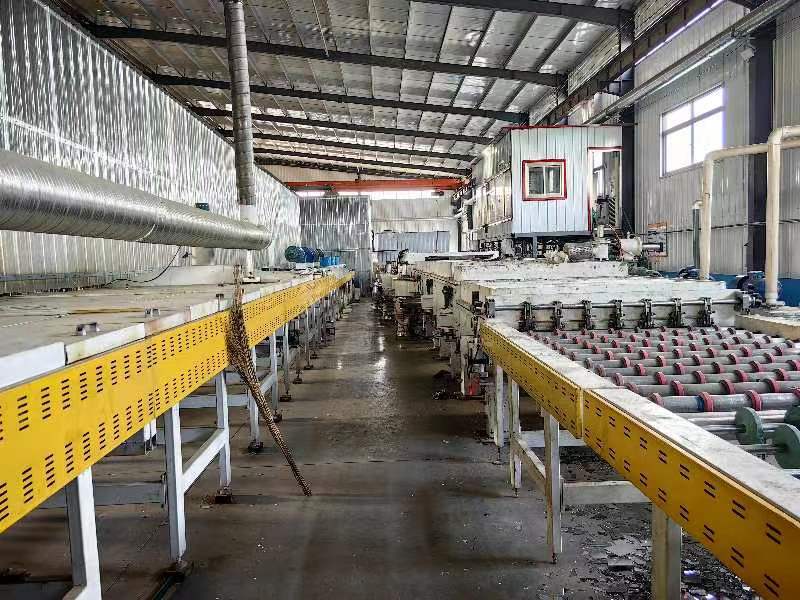Enhancing Efficiency in Glass Coating Lines: Key Considerations for Industrial Applications
Time:
2025-05-03 10:20
In the industrial equipment sector, a glass coating line plays a crucial role in ensuring high-quality finishes and durability for various glass products. The process involves applying a protective coating to glass surfaces, which enhances their resistance to environmental factors, scratches, and UV damage. Understanding the intricacies of glass coating lines can significantly impact production efficiency and product quality.
**1. Process Overview:**
A typical glass coating line consists of several stages, including surface preparation, coating application, curing, and quality control. Each stage is vital for achieving optimal results. Surface preparation often involves cleaning and sometimes etching the glass to ensure proper adhesion of the coating. The coating application can be achieved through various methods, such as spray, dip, or roll coating, depending on the desired finish and production volume.
**2. Technology Integration:**
Modern glass coating lines increasingly incorporate advanced technologies such as automation, robotics, and IoT (Internet of Things) devices. Automation reduces labor costs and minimizes human error, enhancing consistency in the coating process. Moreover, IoT integration allows for real-time monitoring of equipment performance and production metrics, enabling quicker adjustments and predictive maintenance.
**3. Quality Control Measures:**
Implementing rigorous quality control throughout the coating process is essential. This can include techniques such as visual inspections, thickness measurements, and adhesion testing. Employing automated inspection systems can help in identifying defects early, reducing waste and rework. By ensuring each piece meets quality standards, manufacturers can enhance customer satisfaction and reduce returns.
**4. Sustainability Practices:**
As industries move towards more sustainable practices, glass coating lines can adopt eco-friendly materials and processes. Utilizing water-based coatings or reducing volatile organic compounds (VOCs) not only aligns with environmental regulations but can also appeal to a growing customer base that values sustainability.
**5. Continuous Improvement:**
To remain competitive, organizations should embrace a culture of continuous improvement. Regular training for staff, routine maintenance of machinery, and staying updated with industry trends can lead to incremental enhancements in efficiency and product quality.
In conclusion, optimizing glass coating lines within the industrial equipment sector requires a multi-faceted approach that includes technological integration, stringent quality control, and sustainable practices. By focusing on these areas, professionals can drive significant improvements in their coating processes, ultimately leading to enhanced product quality and operational efficiency.
**1. Process Overview:**
A typical glass coating line consists of several stages, including surface preparation, coating application, curing, and quality control. Each stage is vital for achieving optimal results. Surface preparation often involves cleaning and sometimes etching the glass to ensure proper adhesion of the coating. The coating application can be achieved through various methods, such as spray, dip, or roll coating, depending on the desired finish and production volume.
**2. Technology Integration:**
Modern glass coating lines increasingly incorporate advanced technologies such as automation, robotics, and IoT (Internet of Things) devices. Automation reduces labor costs and minimizes human error, enhancing consistency in the coating process. Moreover, IoT integration allows for real-time monitoring of equipment performance and production metrics, enabling quicker adjustments and predictive maintenance.
**3. Quality Control Measures:**
Implementing rigorous quality control throughout the coating process is essential. This can include techniques such as visual inspections, thickness measurements, and adhesion testing. Employing automated inspection systems can help in identifying defects early, reducing waste and rework. By ensuring each piece meets quality standards, manufacturers can enhance customer satisfaction and reduce returns.
**4. Sustainability Practices:**
As industries move towards more sustainable practices, glass coating lines can adopt eco-friendly materials and processes. Utilizing water-based coatings or reducing volatile organic compounds (VOCs) not only aligns with environmental regulations but can also appeal to a growing customer base that values sustainability.
**5. Continuous Improvement:**
To remain competitive, organizations should embrace a culture of continuous improvement. Regular training for staff, routine maintenance of machinery, and staying updated with industry trends can lead to incremental enhancements in efficiency and product quality.
In conclusion, optimizing glass coating lines within the industrial equipment sector requires a multi-faceted approach that includes technological integration, stringent quality control, and sustainable practices. By focusing on these areas, professionals can drive significant improvements in their coating processes, ultimately leading to enhanced product quality and operational efficiency.
glass coating line
News







